
John William Coltrane was an American jazz saxophonist, bandleader and composer. He is among the most influential and acclaimed figures in the history of jazz and 20th-century music.
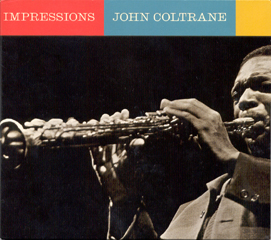
Impressions is an album of live and studio recordings by jazz musician John Coltrane, released by Impulse! Records in July 1963.

A Monastic Trio is the first solo album by Alice Coltrane. It was recorded in 1968 at the John Coltrane Home in Dix Hills, New York, and was released later that year by Impulse! Records. On the album, Coltrane appears on piano and harp, and is joined by saxophonist Pharoah Sanders, bassist Jimmy Garrison, and drummer Rashied Ali, all of whom were members of John Coltrane's last quintet. Drummer Ben Riley also appears on one track. The album was reissued on CD in 1998 with three additional tracks, one of which is a piano solo recorded in 1967.

Stellar Regions is a posthumous release by John Coltrane, drawn largely from tapes discovered in 1994 by the artist's wife, Alice Coltrane, who plays the piano on the session. Alice Coltrane is also responsible for the titles of the eight numbers featured on the album.

Interstellar Space is a studio album by American jazz saxophonist John Coltrane, featuring drummer Rashied Ali. It was recorded in 1967, the year of his death, and released by Impulse! Records in September 1974.

Live At The Village Vanguard Again! is a live jazz album by saxophonist John Coltrane. Recorded in May 1966 during a live performance at the Village Vanguard jazz club in New York City, the album features Coltrane playing in the free jazz style that characterized his final years. The lineup features Coltrane's quintet, with Coltrane on tenor and soprano saxophones, bass clarinet, and flute, Pharoah Sanders on tenor saxophone and flute, Alice Coltrane on piano, Jimmy Garrison on bass, and Rashied Ali on drums, supplemented by Emanuel Rahim on percussion. It was the quintet's only official recording released during Coltrane's lifetime.

Ascension is a jazz album by John Coltrane recorded in June 1965 and released in 1966. It is considered a watershed in Coltrane's work, with the albums recorded before it being more conventional in structure and the albums recorded after it being looser, free jazz inspired works. In addition, it signaled Coltrane's interest in moving away from the quartet format. AllMusic called it "the single recording that placed John Coltrane firmly into the avant-garde".
Carlos Ward is a funk and jazz alto saxophonist and flautist. He is best known as a member of the Funk and disco band BT Express as well as a jazz sideman.

The Olatunji Concert: The Last Live Recording is the Impulse! Records-released final live recording of saxophonist John Coltrane, recorded April 23, 1967, at the Olatunji Center of African Culture in New York and released on Compact Disc in 2001. The album consists of two songs—"Ogunde", which Coltrane also recorded for his final approved album, Expression, and an especially free-form "My Favorite Things", which Coltrane had performed live regularly since 1960. The recording was made for broadcast on Billy Taylor's local radio station, WLIB. The Olatunji Concert was not Coltrane's last show, but rather, his penultimate—he would play once more on May 7, 1967, in Baltimore.
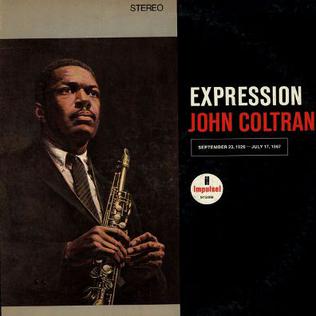
Expression is an album by jazz saxophonist John Coltrane, recorded in early 1967 and released in late September of that year, around Coltrane's birthday, and two months after his death. This was the first posthumous release of a Coltrane recording, and the last album he personally authorized.

Coltrane "Live" at the Village Vanguard is a live album by jazz musician John Coltrane, released in February 1962 on Impulse Records. It is the first album to feature the members of the classic quartet of Coltrane with McCoy Tyner, Jimmy Garrison, and Elvin Jones, as well as the first Coltrane live album to be issued. In contrast to his previous album for Impulse!, this one generated much turmoil among both critics and audience alike with its challenging music.
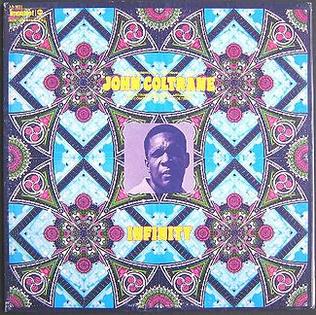
Infinity is an album credited to John Coltrane, released on Impulse! Records in 1972. It features overdubs with strings of Coltrane's pieces recorded in 1965 and 1966, at the hands of Alice Coltrane. Her controversial "re-imagining" of her husband's late works was criticised by both fans and critics, as she took his original performances and superimposed them over lush orchestral backgrounds and re-dubbed rhythm section parts, as well as recording new solos on piano, organ, harp and timpani.
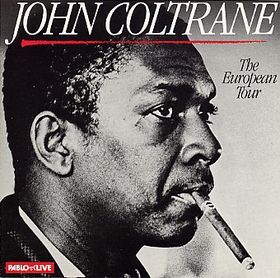
The European Tour is a posthumous album by jazz musician John Coltrane released in 1980 on the Pablo label. The tracks were recorded on October 22, 1963 at the Koncerthuset in Stockholm, Sweden during a two-week European tour which was produced by Norman Granz, and which included concerts in Oslo, Helsinki, Amsterdam, Milan, Kaiserslautern, Frankfurt/Main, Paris, Berlin, Munich, and Stuttgart. Additional tracks from the Stockholm and Berlin concerts appear on Afro Blue Impressions. Tracks from Stockholm, Berlin, Paris, and Stuttgart are featured on the 2001 Pablo compilation Live Trane: The European Tours.

Bye Bye Blackbird is a live album by jazz musician John Coltrane recorded on November 19, 1962 at the Konserthuset in Stockholm and released in 1981 by Pablo Records.
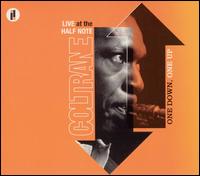
Live at the Half Note: One Down, One Up is a 2005 double CD compilation of two previously unreleased 1965 Friday radio broadcasts – March 26 and May 7 – at the Half Note Club in New York City, featuring John Coltrane with McCoy Tyner, Jimmy Garrison, and Elvin Jones.

Selflessness Featuring My Favorite Things is a posthumous album by jazz musician John Coltrane, released in 1969. The album juxtaposes two tracks recorded live at the 1963 Newport Jazz Festival with a single track ("Selflessness") recorded in a studio in Los Angeles in 1965.

Cosmic Music is a jazz album by John Coltrane and Alice Coltrane released after John Coltrane's death. John Coltrane only plays on two tracks, "Manifestation" and "Reverend King".

Offering: Live at Temple University is a live album by John Coltrane recorded in 1966 and released posthumously by Resonance Records on September 23, 2014, Coltrane's 88th birthday. The album won the Grammy Award for Best Album Notes and was well-received by critics. Proceeds from the album benefit the John Coltrane Home.

Dear Old Stockholm is a compilation album by jazz musician John Coltrane released by GRP and Impulse! in 1993. The music, which was recorded on April 29, 1963 and May 26, 1965 at Van Gelder Studio in Englewood Cliffs, NJ, features Coltrane's quartet with Roy Haynes substituting for Elvin Jones on drums.
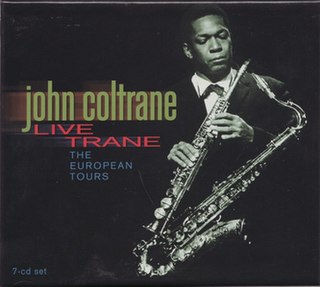
Live Trane: The European Tours is a 7–CD compilation album by American saxophonist John Coltrane containing music recorded live during 1961, 1962, and 1963 European tours, all of which took place under the auspices of Norman Granz's Jazz at the Philharmonic programs. The album, which was released in 2001 by Pablo Records, features Coltrane on tenor and soprano saxophones along with pianist McCoy Tyner, bassists Jimmy Garrison and Reggie Workman, and drummer Elvin Jones. In addition, Eric Dolphy is heard on alto saxophone, bass clarinet, and flute on a number of tracks.


















